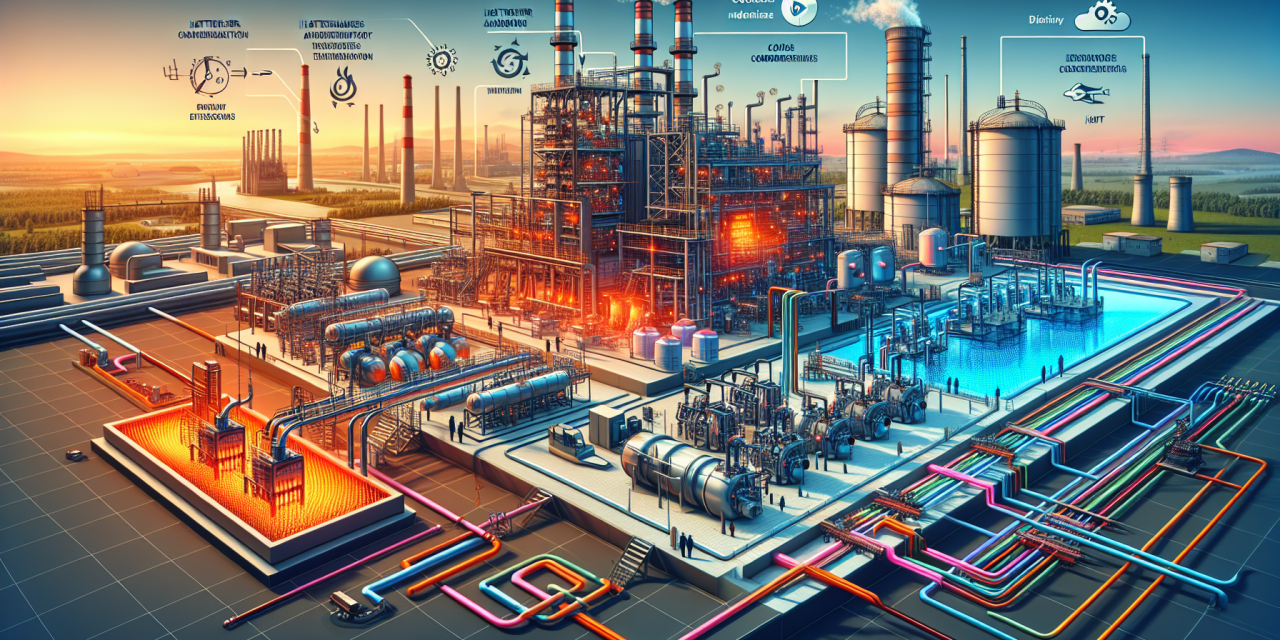Table of Contents
- Introduction
- Understanding Heat Transfer
- Heat Transfer Augmentation Techniques
- The Importance of Heat Transfer Augmentation
- Networking and Knowledge Sharing
- Advanced Heat Transfer Enhancement Techniques Conference
- FAQs
- Conclusion
Introduction
In the dynamic landscape of the process industry, heat transfer plays a crucial role. It drives efficiency, influences product quality, and affects operational costs. Over the years, professionals in the field have explored various enhancement techniques to optimize heat transfer processes. By attending conferences and workshops that focus on these areas, individuals can gain invaluable insights and stay updated on the latest advancements.
Understanding Heat Transfer
Before diving into augmentation techniques, let’s clarify what heat transfer entails. Essentially, heat transfer involves the movement of thermal energy from one object or substance to another. This process can occur via conduction, convection, or radiation. Each of these mechanisms plays a vital role in various industrial applications, so a solid understanding is paramount.
Heat Transfer Augmentation Techniques
To enhance heat transfer efficiency, professionals employ various techniques. These methods can significantly impact the overall effectiveness of heat exchangers, cooling towers, and other crucial equipment. Let’s explore the categories of augmentation techniques.
Passive Techniques
Passive heat transfer augmentation techniques involve physical modifications to heat exchangers that allow fluid dynamics to improve without needing external power. Examples include enhanced surface areas through fins or grooves, which increase the heat transfer surface, enhancing conduction and convection. Moreover, adding inserts like baffles can also improve mixing and thermal performance.
Active Techniques
In contrast, active techniques require external energy sources. For instance, using pumps to increase flow rates or employing temperature control systems can enhance heat transfer efficiency. These approaches offer more control over heat exchange processes, allowing for optimal performance.
Hybrid Techniques
Combining both passive and active methods leads to hybrid techniques. By integrating enhanced surface modifications with active methods like forced convection, industries can greatly boost heat transfer rates while optimizing energy utilization.
The Importance of Heat Transfer Augmentation
So, why should professionals in the process industry prioritize heat transfer augmentation? The answer is multi-faceted.
- Energy Efficiency: Enhanced heat transfer reduces energy consumption, leading to significant cost savings.
- Improved Productivity: Efficient heat exchange processes can streamline operations and increase productivity.
- Environmental Impact: Lower energy usage translates to reduced emissions and a smaller carbon footprint, aligning with environmental sustainability goals.
Networking and Knowledge Sharing
Participating in industry conferences provides opportunities for networking and knowledge sharing. Professionals can meet others facing similar challenges and share insights on best practices and innovative techniques. In this regard, the Advanced Heat Transfer Enhancement Techniques Conference stands out as an excellent venue for learning and collaboration.
Advanced Heat Transfer Enhancement Techniques Conference
This conference is specifically designed for those wanting to delve deeper into advanced techniques. Attendees will experience engaging sessions featuring expert speakers, interactive workshops, and networking opportunities. Furthermore, the event showcases cutting-edge research and practical applications, making it a must-attend for anyone involved in the process industry.
FAQs
What are some examples of passive heat transfer augmentation techniques?
Examples include the utilization of fins, grooves, or inserts like baffles within heat exchangers to enhance the surface area and improve mixing within fluids.
How do I know which heat transfer augmentation technique to employ?
Choosing the right technique depends on several factors, including the desired heat transfer rates, the types of fluids involved, and the specific industrial application.
Can participation in industry conferences enhance my knowledge?
Absolutely! Industry conferences offer a wealth of knowledge through expert sessions, networking opportunities, and practical workshops. They are excellent platforms for staying current with technological advancements.
Conclusion
In summary, heat transfer augmentation techniques are essential for maximizing efficiency in the process industry. By understanding various methods, including passive, active, and hybrid techniques, professionals can make informed decisions to enhance their operations. Moreover, participating in conferences such as the Advanced Heat Transfer Enhancement Techniques Conference fosters knowledge exchange and networking opportunities that are critical for success in today’s competitive landscape.
For anyone interested in expanding their expertise further, consider exploring additional resources such as:
Essential Insights into Mechanical Technology Workshop for Engineers,
Unlocking Financial Success: Mastering Essential Finance Management Skills,
Exploring the Dynamics of Employee Relations,
Unlocking Success: Dynamic Strategies for Purchasing and Contract Negotiation,
Unleashing Potential: The Creative Strategic IT Leadership Training Conference Experience. This knowledge will undoubtedly enhance your professional development in the process industry.





